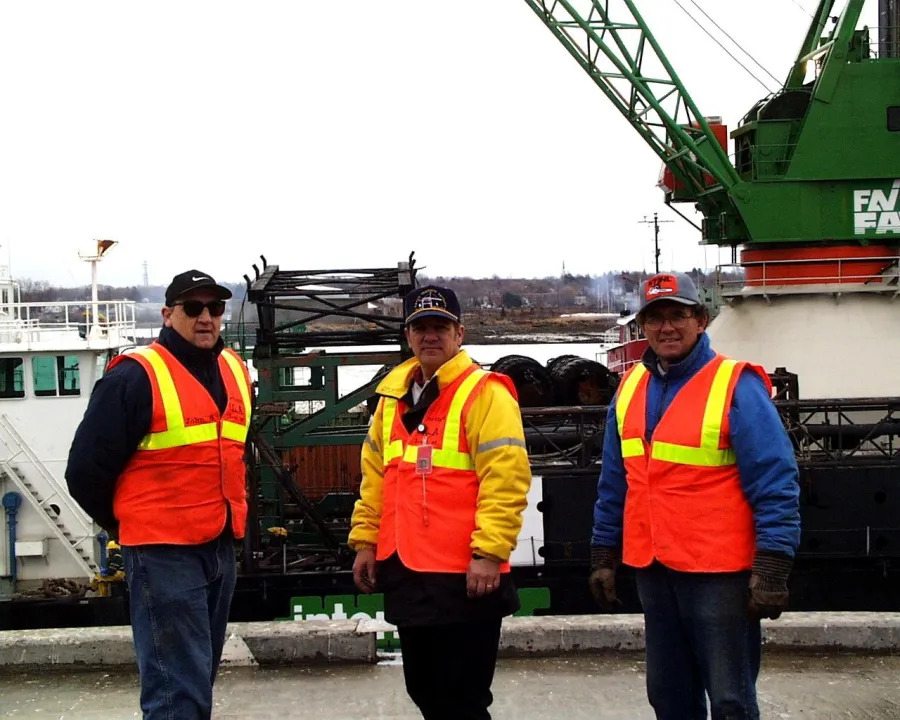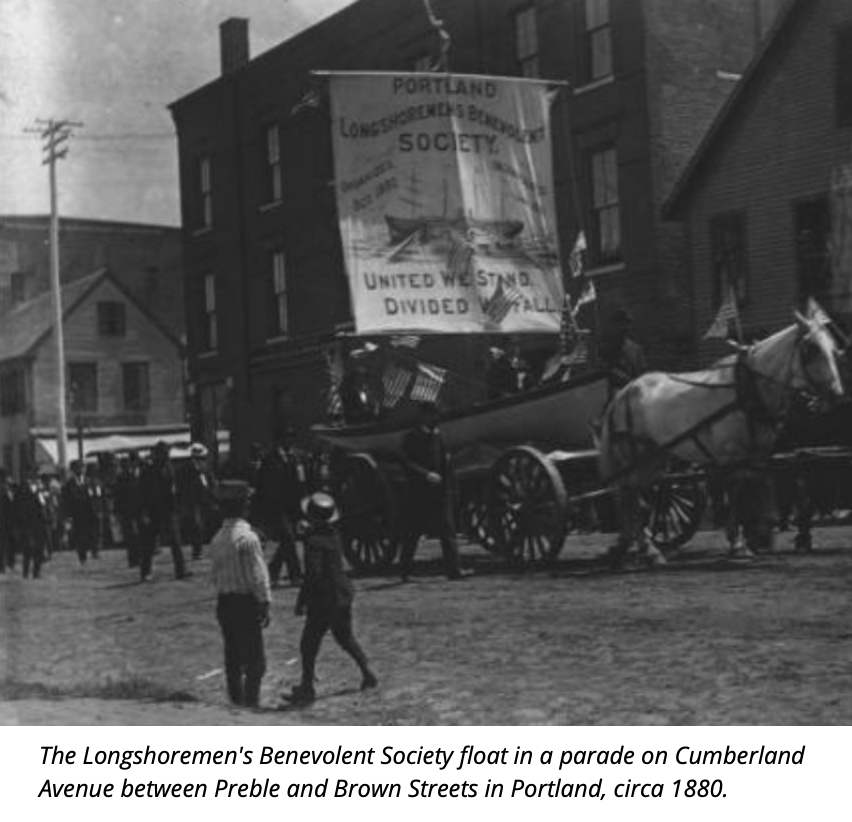After Decades of Struggles, The Future is Looking Brighter for Portland Longshoremen Local 861


Despite the pandemic and economic disruptions, members of Portland Longshoremen Local 861 (ILA) are busier than they have been in decades down at the Port of Portland. According to the Portland Press Herald, the state’s only container port is on the verge of a record-breaking year with at least 36,000 shipping containers expected to come through the International Marine Terminal this year, marking a fivefold increase from 2013 when the Icelandic shipping company Eimskip established itself in Portland.
Unlike other US ports where supply chain disruptions have caused cargo ships to back up, Maine’s shipping port is running smoothly and Local 861 is seeking more members to keep up with the demand.
“We are in such a radically different place than we once were,” said Jack Humeniuk, Vice President of ILA 861. “When I first started working down there in the mid 1970s, it was so sad. Everything on the waterfront was collapsing and rotting from neglect and jobs there were scarce. Now that facilities have been rebuilt and business has returned. Sometimes I just stand there and look at that whole end of Commercial Street and say ‘wow.’”
Local 861 traces its roots to 1880, when a a group of predominantly Irish dockworkers and others pooled their resources to form the Portland Longshoremen’s Benevolent Society to provide mutual aid to each other, enhance their interests as workers and to “protect themselves from arbitrary employers.”

Many of their families had fled Ireland during the Great Famine and several members of the Society were involved in promoting Irish Nationalism to liberate Ireland from British rule. In the beginning, it avoided labor conflicts, but as time passed the longshoremen became more involved in worker struggles and affiliated with the International Longshoreman’s Association in 1914. The local had roughly 2,000 members by the end of World War I. During World War II, about 500 longshoremen were employed to load cargo to aid the war effort, but shipping volume collapsed after the war.
For decades, Portland was the closest ice-free port to Europe and was a transport hub for Canadian wheat, but with the rise of trucking and large-scale containerized shipping beginning to dominate the industry in the 1960s, marine cargo shipping shifted to ports in more densely populated areas. Without the geography and population mass to support large container shipping, the Port of Portland fell into steep decline.
By the time Humeniuk began working on the docks in 1976, Portland’s maritime shipping economy was pretty dismal. If they were lucky, ILA members found work shipping potatoes from Aroostook County through Searsport and the Maine State Pier in Portland.
As Humeniuk recalled in an interview with the Portland Phoenix last year, hundreds of Local 861 members would gather outside the pier at 7:30am and waited to be called for work loading and unloading ships at 8 o’clock. A foreman called names off a list and then picked workers at random until they had enough hands. Members who weren’t picked, would leave and often return another day in hopes of getting work.
Then in 1981, Bath Iron Works took over the State Pier to build an overhaul and repair facility for the Navy and there was no more work there for longshoremen. The union would have likely collapsed had it not been for the devotion of its members to their beloved union.
“People continued paying dues because they wanted to stay in the union,” said Humeniuk. “Generations of longshoremen had worked at the port and it was more than just a job. It was a family.”
Local 861 spent the next several years convincing the Maine Legislature and other local officials to invest in rebuilding the port as pressure from non-maritime developers on the waterfront grew. In 1991, a small container shipping company set up shop at the facility and found a little market niche shipping between Maine, Boston and Nova Scotia.
After the local convinced the Port Authority to lease the International Marine Terminal from the city and the state began funding the modernization and expansion of the terminal, the facility attracted Eimskip to come in as a tenant. In 2013, the company began shipping mostly frozen fish as well as machinery, apparel, beverages, minerals and metals from Asia and Northern Europe into Maine. Since then, the number of containers coming across Portland’s docks has increased by 23 percent a year on average, representing about $882 million worth of products last year, according to the Press Herald. Currently, Eimskip provides about two thirds of the work for Local 861 while the cruise ship industry makes up the other third.
In 2018, Humeniuk said the union was able to ratify its best contract ever, which includes a $35 an hour base wage, paid holidays, protections from fully automated terminals and more. The local currently has 48 members with 12 full-time and 17 part time workers, but Humeniuk says there are more opportunities on the horizon with servicing offshore wind projects and freight rail expansion. He says he is particularly optimistic that more and more Mainers are becoming interested in joining unions to better their livelihoods and enhance their interests as the Portland Longshoremen first did over 140 years ago.
“I’m encouraged that more people are rediscovering the value of union membership and forming unions,” said Humeniuk. “They’re finally starting to rediscover that there are a lot of things a group of people can accomplish when they have a common goal and they band together.”
